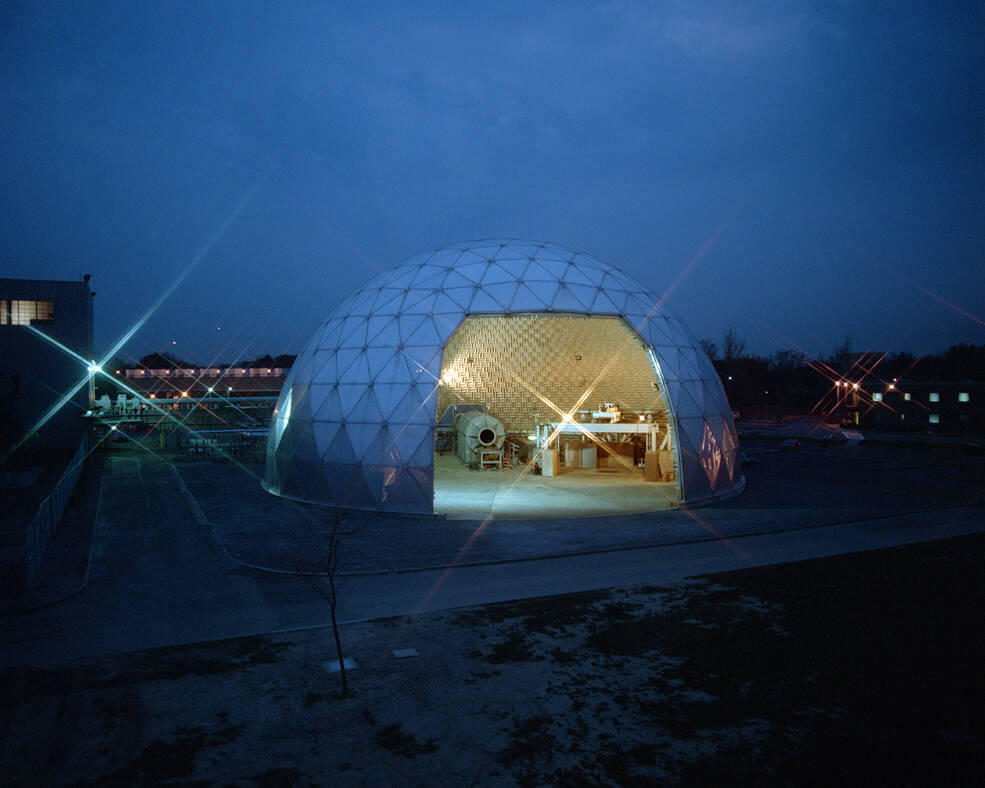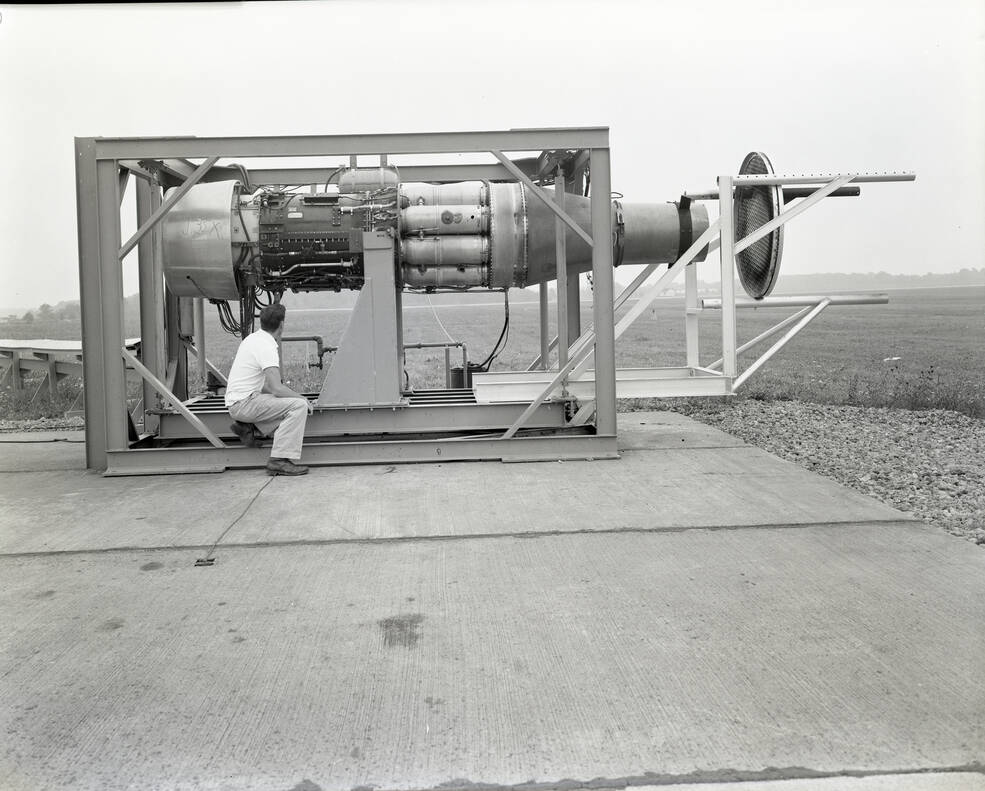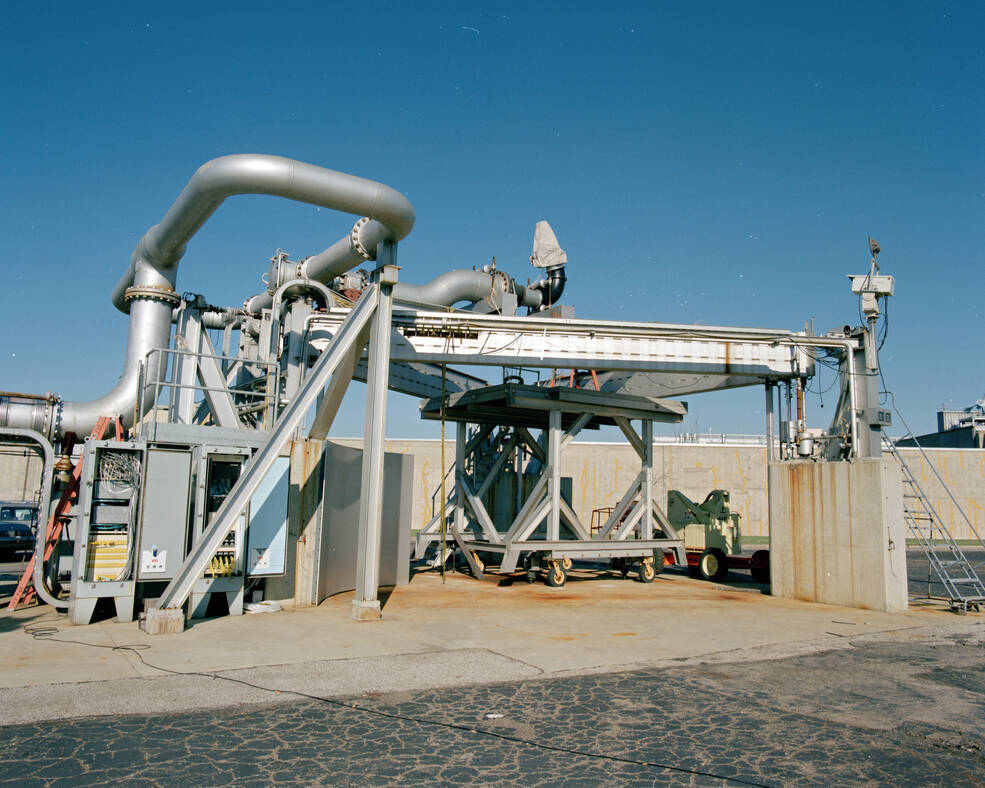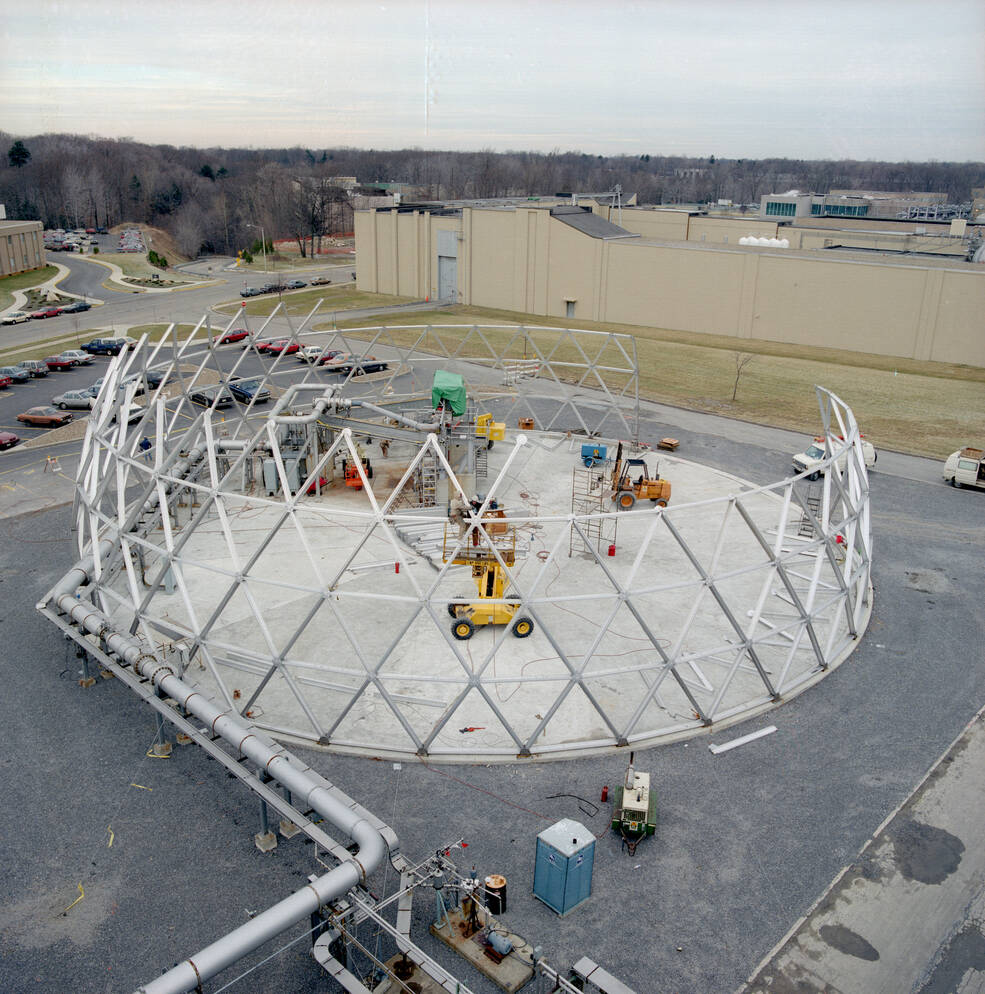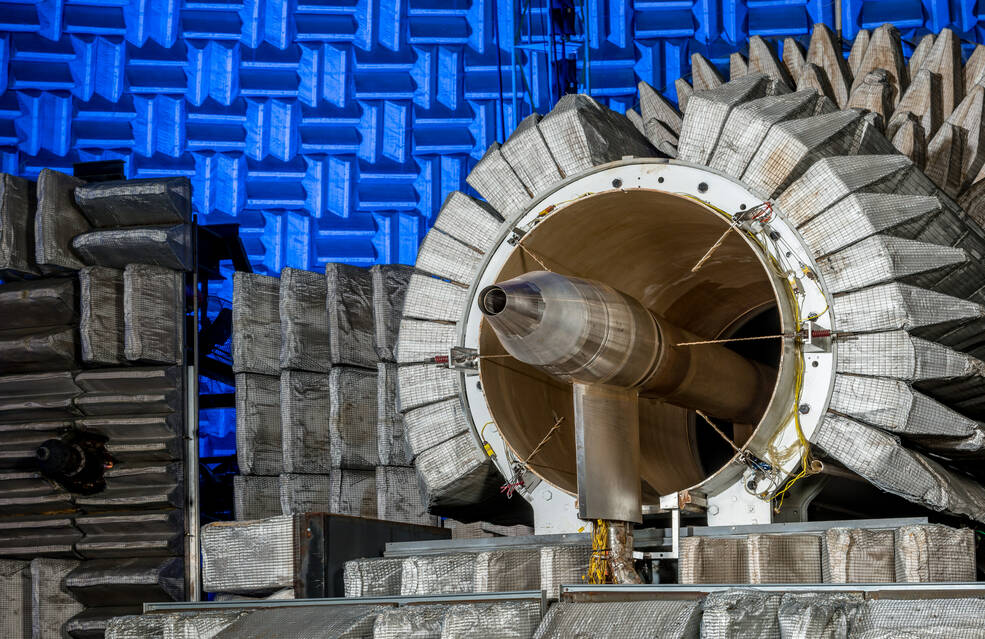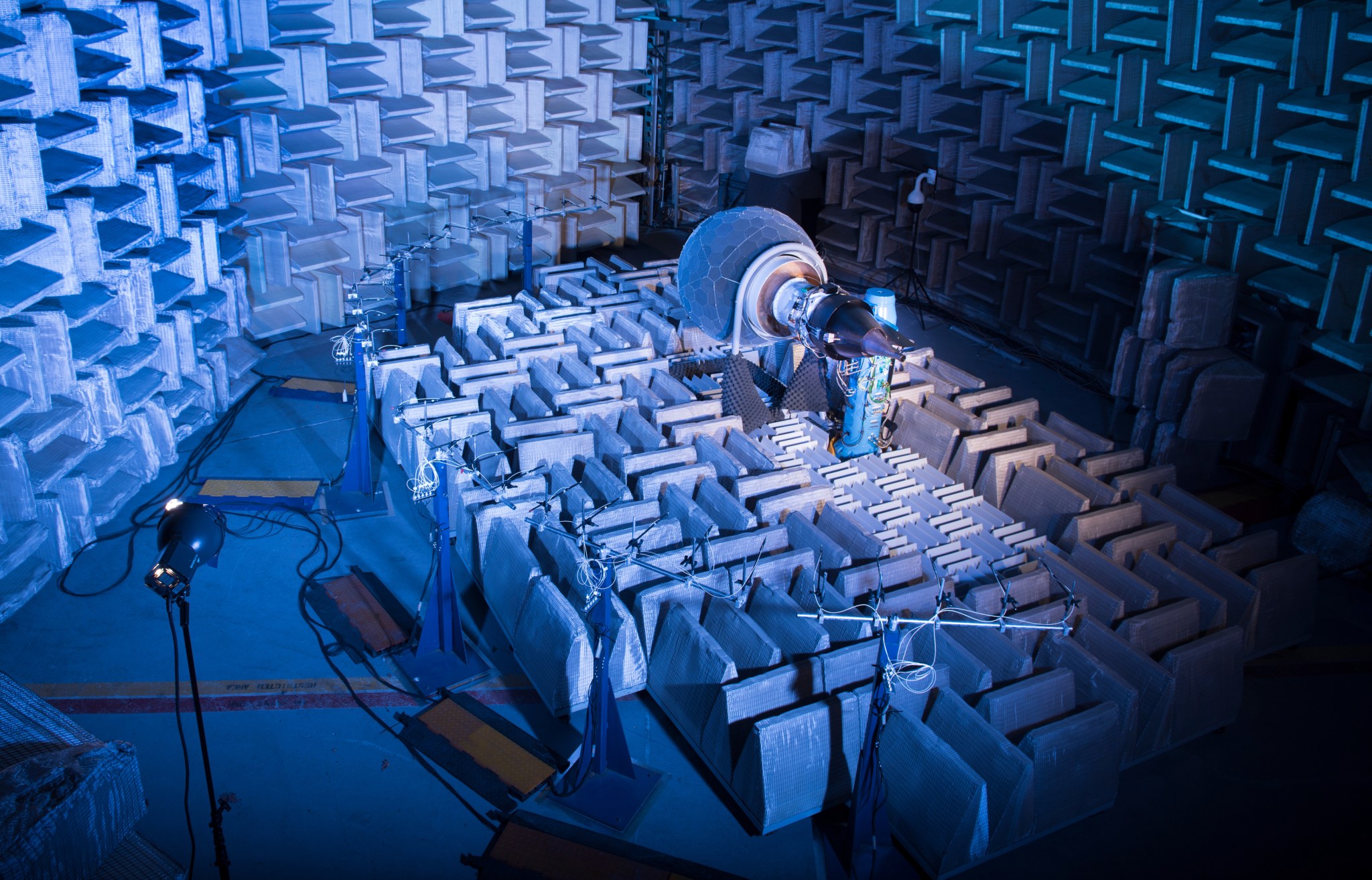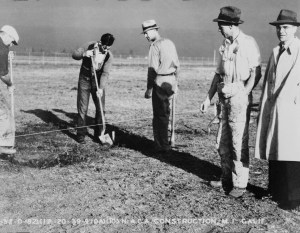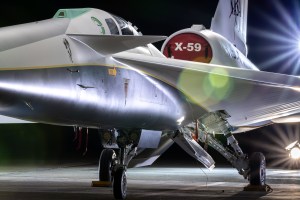NASA Has Helped Hush Aircraft Engine Noise for Decades
Modern jet engines are loud, but they used to be much louder. NASA’s Glenn Research Center has been at the forefront of the nation’s efforts to reduce aircraft engine noise for over 70 years. During this time, the center has built an array of test facilities to carry out this work, culminating in the Aero-Acoustic Propulsion Laboratory (AAPL), a world-class noise-reduction research facility.
The AAPL, referred to as “the dome,” contains multiple test rigs enclosed in a large, echo-free chamber. The unique 130-foot diameter and 65-foot-high hemispherical structure stands out on Glenn’s campus. Its triangular sections make it appear like a golf ball rising from the ground. The interior is covered in spiky, fiberglass sound-dampening wedges and an overhead array of microphones that capture engine noise data.
Jet propulsion has been a cornerstone of NASA Glenn’s research since the center’s establishment as a National Advisory Committee for Aeronautics (NACA) laboratory in the early 1940s. The lab’s improvements to the nation’s first generations of turbojet engines contributed to making the first jet airliners possible in the mid-1950s.
Jet aircraft are much louder than their piston-engine counterparts, though, and communities near airports complained about the increased noise. The center began studying its causes in the early 1950s. Since it is difficult to evaluate noise in the wind tunnels and test chambers normally used to test engines, Glenn researchers mounted engines on simple steel stands near the lab’s hangar and placed microphones around them to measure noise levels.
Researchers found that the primary source of noise was not the mechanical elements of engines, but the mixing of the cold atmosphere with their narrow, high-speed stream of hot exhaust gases. In response, researchers tested unique nozzle and ejector designs and worked to balance sound-reducing hardware’s effects on engine performance and weight.
The introduction of turbofan engines, which offered increased efficiency and lowered noise levels, proved to be a breakthrough in the 1960s. But with more airliners, new Federal Aviation Agency standards, and an increased interest in vertical and short-takeoff and landing (V/STOL) aircraft, continued noise reduction research was needed.
In the late 1960s and early ’70s, NASA Glenn constructed a new, more robust array of outdoor test stands at sites across campus to study fan noise, including three rigs at the site of the current APPL. The Powered Lift Facility (PLF) was added to the site in 1986 to provide data on V/STOL concepts. Complaints from the local community about the PLF’s noise levels, however, led to the suspension of testing in 1989.
In 1990, NASA initiated the High-Speed Research (HSR) program to develop technologies for supersonic transportation, so Glenn started designing the Nozzle Acoustic Test Rig (NATR), a 53-inch diameter wind tunnel that could test acoustic and aerodynamic performance of nozzles. This testing was inherently loud, so the center decided to construct a structure to cover both the PLF and NATR.
The new facility was completed in 1991 and named the Aero-Acoustic Propulsion Laboratory (AAPL). Its geodesic dome not only prevents noise from exiting the facility, but also protects against outside sounds and weather.
The NATR has become the center’s workhorse for acoustic testing. In addition to the HSR program, the NATR also performed testing for the Advanced Subsonic Technology program and conducted the first successful test of a chevron nozzle in 1997.
The Advanced Noise Control Fan (ANCF) rig and the Small Hot Jet Acoustic Rig (SHJAR) were added in the mid-1990s and 2000, respectively. Researchers used the ANCF to study acoustic liners and fan noise, and the SHJAR was more economical to operate for smaller tests than the NATR.
In the early 2000s, the AAPL was outfitted with a new acoustic arena that allows simultaneous testing on multiple rigs and the measurement of flyby and sideline noise. Use of the PLF declined over the years, and it was eventually decommissioned in 2007. The ANCF was removed in 2021 to create space for the DGEN AeroPropulsion Research Turbofan (DART) rig, a small-scale engine testbed useful for a variety of research.
The AAPL continues to play a key role in NASA’s testing efforts. Researchers are comparing noise data collected from scale-model nozzles inside the facility to data from Learjet 25 flight tests. This work may improve researchers’ ability to predict takeoff noise for future supersonic commercial aircraft.
Robert S. Arrighi
NASA’s Glenn Research Center




























